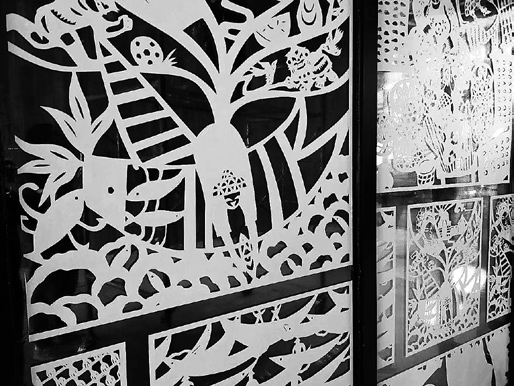

“The Power of Shajing,” an exhibition at the 17th Shajing Golden Oyster Festival, is being held in Bao’an District. For more than 1,000 years, the Shajing people have been raising oysters and in 2007, the oyster breeding in Shajing, along with other local customs related to oysters, was listed in Shenzhen’s intangible cultural heritage. The exhibition features the introduction of Shajing’s history and artworks inspired by Shajing’s oyster culture. Live music concerts, light shows and oyster-dish tasting events are also being held at the park. Dates: Until Jan. 3, 2021 Hours: 10 a.m.-9 p.m. Venue: Exhibition hall, Haoxiang Lake Park, Bao’an District (宝安区蚝乡湖公园文创展馆) Metro: Line 11 to Houting Station (后亭站), Exit B You are also recommended to check out oyster-themed locations in Shajing, a traditional oyster-harvesting area. Jiang Ancestor Hall 江氏大宗祠 Built in the early years of the Qing Dynasty (1644-1911), the Jiang Ancestor Hall complex is a typical Cantonese work of architecture, with many types of doors throughout the structures. It is also embellished with relief carvings and sculptures, especially in the temples and ancestral halls. Some carvings and sculptures were made from wood, bricks and stones. The subject matter of these carvings and sculptures generally revolve around figures and scenes from Chinese mythology and folklore. The most striking feature of the Jiang Ancestor Hall is the oyster shell walls. Historians believe that the Jiang family used oyster shells for the walls due to the large quantity of oysters available in Shajing. Add: Buchong Road 3, Shajing, Bao’an District (宝安区沙井步涌三路) Metro: Line 11 to Houting Station (后亭站), Exit A and then take a taxi Longjin Stone Pagoda 龙津石塔 Built in the Southern Song Dynasty (1127-1279), Longjin Stone Pagoda was used to guard Shajing and its residents, who believed that the pagoda could exorcise river monsters. Buddhist carvings can be found in the pagoda. Add: 382 Shajing Boulevard, Bao’an District (宝安区沙井大街382号) Metro: Line 11 to Houting Station (后亭站), Exit A and then take a taxi Shajing Oyster Culture Museum 沙井蚝文化博物馆 More than 100 items are on display at the Shajing Oyster Culture Museum, a tribute to the centuries-old history of Shajing oyster breeding. Add: 299 Shajing Boulevard, Bao’an District (宝安区沙井大街299号) Metro: Line 11 to Houting Station (后亭站), Exit A and then take a taxi Tin Hau Temple 天后古庙 Tin Hau, or Mazu, is a Chinese sea goddess. Revered after her death as a tutelary deity of seafarers, including fishermen and sailors, her veneration spread throughout China’s coastal regions and overseas Chinese communities throughout Southeast Asia. She was thought to roam the seas, protecting her followers through miraculous interventions. She is now generally regarded by her followers as a powerful and benevolent Queen of Heaven. Add: 178 Shajing Boulevard, Bao’an District (宝安区沙井大街178号) Metro: Line 11 to Houting Station (后亭站), Exit A and then take a taxi(Cao Zhen) | 
